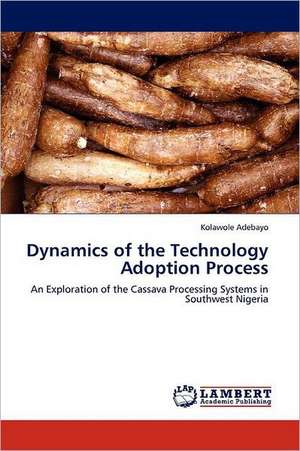Dynamics of the Technology Adoption Process
Autor Kolawole Adebayoen Limba Engleză Paperback – 19 mar 2012
Preț: 390.82 lei
Nou
Puncte Express: 586
Preț estimativ în valută:
74.79€ • 81.21$ • 62.83£
74.79€ • 81.21$ • 62.83£
Carte tipărită la comandă
Livrare economică 22 aprilie-06 mai
Preluare comenzi: 021 569.72.76
Specificații
ISBN-13: 9783848437696
ISBN-10: 3848437694
Pagini: 144
Dimensiuni: 152 x 229 x 9 mm
Greutate: 0.22 kg
Editura: LAP LAMBERT ACADEMIC PUBLISHING AG & CO KG
Colecția LAP Lambert Academic Publishing
ISBN-10: 3848437694
Pagini: 144
Dimensiuni: 152 x 229 x 9 mm
Greutate: 0.22 kg
Editura: LAP LAMBERT ACADEMIC PUBLISHING AG & CO KG
Colecția LAP Lambert Academic Publishing
Notă biografică
Kolawole Adebayo, Senior Lecturer at the University of Agriculture Abeokuta, Nigeria holds a PhD in Agricultural Extension and Rural Development. His research interests are dissemination of agricultural innovations in smallholder farming systems; sustainable funding of rural development as well as rural livelihoods and management of the environment






